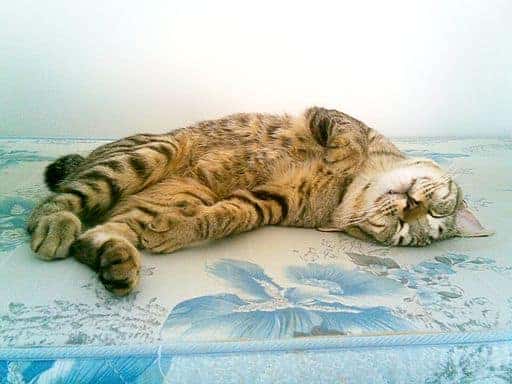Diseases of the Japanese Bobtail, the main pathologies affecting this breed of cat. Let’s find out what they can be.

The Japanese Bobtail is a sturdy cat but at the same time athletic and snappy, with a marked agility that allows it to make fantastic jumps.
This strong and healthy body structure ensures this cat a long and healthy life.
However, like all cats, it is not immune to diseases and even if it is quite lucky in terms of health, it could in any case be affected by common problems. Let’s see what are the diseases of the Japanese Bobtail.
Diseases of the Japanese Bobtail

The Japanese Bobtail does not require special care, indeed the short-haired variety does not even have a strong coat shedding.
The same goes for diseases of the Japanese Bobtail, they are practically almost completely absent. If it weren’t for that voracious appetite that was dangerous for his body.
An energetic and always playful cat, the Japanese Bobtail is also a very sweet, affectionate, sociable cat and likes to be the center of attention of its human family members.
If well cared for, the Japanese Bobtail can live safely even up to 16 years of age, but as we mentioned before, it could, like all cats, be affected by common diseases.
Here are the main diseases of the Japanese Bobtail and beyond:
- Obesity and diabetes : Although the Japanese Bobtail can be considered a lucky cat in terms of health, it is still subject to gain weight. Despite his agility and his handsome and athletic physique, he has a decent appetite that drives him to ask for more food than he deserves. It will be necessary to control his diet and avoid that he can find himself in a situation of obesity in the cat. Like all cats, the Japanese Bobtail also needs to consume meals based on animal proteins every day, which more than any other substance is able to transform into energy. While he must minimize the amount of carbohydrates present in his diet. Furthermore, this breed requires daily physical exercise, several games, scratching posts and above all high shelves where it can climb.
- Allergies: To be able to guess that the cat is an allergic subject, just observe it. If the animal tends to scratch itself until it scratches itself, sometimes even to the point of injuring itself, it is easy for the animal to suffer from some skin allergy. Allergies that tend to affect cats can be of various origins ;
- Abscess: It is an infection that we can observe on the paws, behind the tail or on the muzzle of the animal. It occurs when there are deep wounds on the cat’s body;
- Feline conjunctivitis : This is the inflammation of the mucous membranes of the cat’s eye. If the cat tears from one eye or both, it could be suffering from conjunctivitis, an inflammation that affects the transparent layer that covers the anterior part of the eyeball and the inner surface of the upper and lower eyelids (the conjunctiva, in fact);
- IVF: The syndrome called feline immunodeficiency (FIV) is an infectious disease caused by a retrovirus. The FIV virus is not able to infect humans or other non-feline animals, it is transmitted directly by direct contact, through the exchange of organic fluids (saliva, blood) and is not resistant to the environment. To date, there is still no cure for IVF. However, checks, periodic vaccinations, good hygiene and proper nutrition can improve and extend the life of the cat;
- Mycosis: It is a disease caused by fungi, which can cause redness, scabs and other symptoms that cause the cat to scratch constantly, with the risk of spreading the infection to other parts of the body. Transmission occurs by direct contact and in some cases the cat may not show symptoms but be a healthy carrier;
- Otitis: It is the inflammation of the epithelium that covers the ear canal of the auricle. It can be external, internal or attack the middle ear. The causes can be multiple and can even become chronic in cats. It occurs mainly in cats with low immune defenses;
- Periodontitis: A disease of the cat ‘s mouth which, if not treated in time, can even be fatal. Periodontal diseases occur with greater frequency in the elderly cat, but not only: over 3 years of age many cats begin to suffer from these disorders;
- Mange: It is caused by a mite of which there are several species and subspecies. These mites cause severe skin infections in cats, generally starting in the face and ears and spread to the rest of the body and are highly contagious. Mange in cats causes eczema-like symptoms: itching, scabs, patchy hair loss.
- Toxoplasmosis : It is an infectious, parasitic disease caused by the parasite Toxoplasma gondii, which finds its final host in the feline where it can reproduce. The cat can become infected when it feeds on contaminated rodents and birds or by ingesting raw meat. Stray cats and those used to living outside are more prone to contract the disease, but the fact remains that even our Japanese Bobtail living at home can become infected by ingesting an infected animal taken from the garden.






